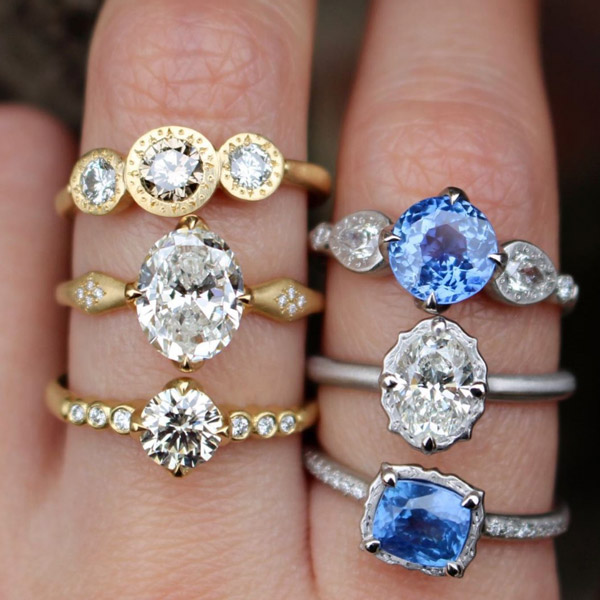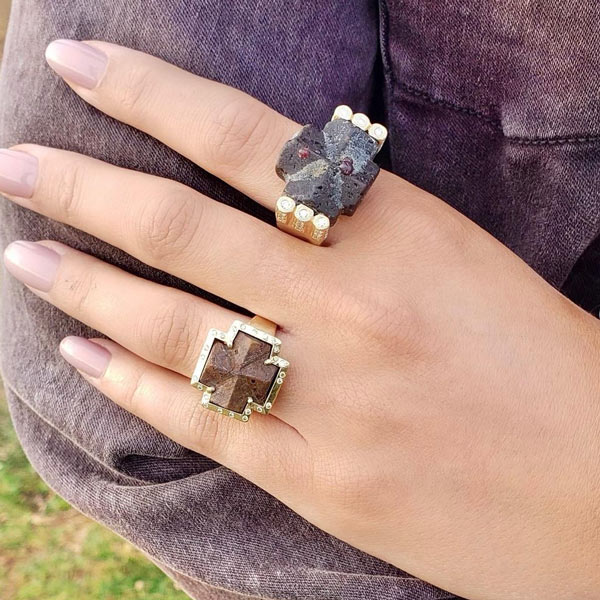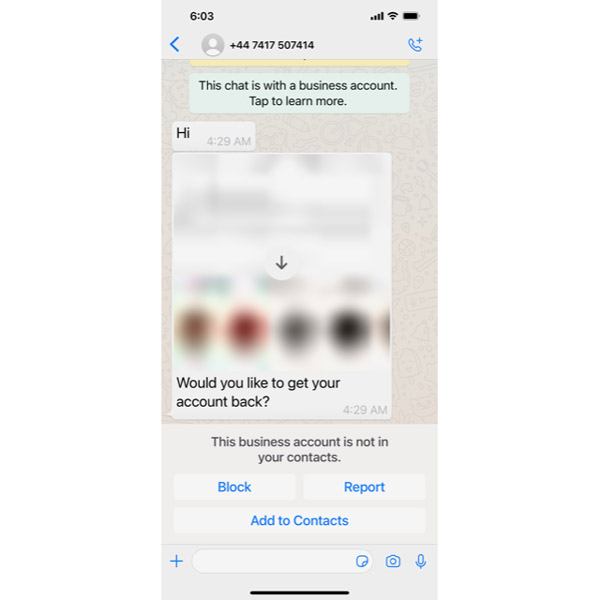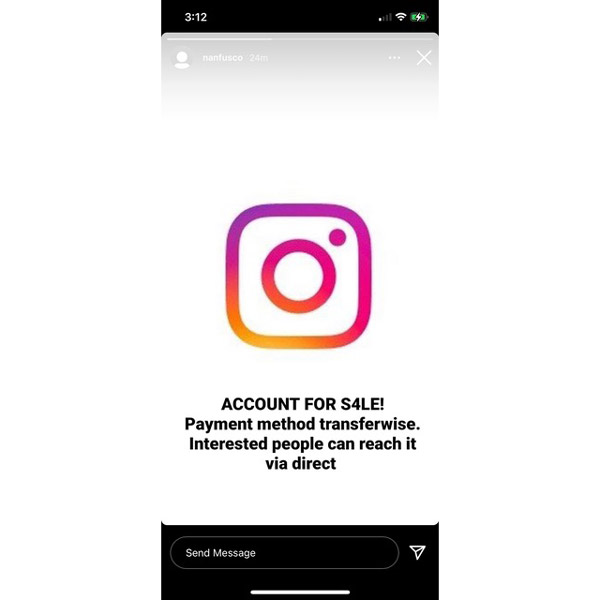
A few weeks ago, I entered into an Instagram contest run by an independent children’s clothing retailer I frequent. Within moments, an account appearing to bear its name requested to follow me (I have a private account) and sent me a message.
I’m paraphrasing, but it was something to the tune of, “Congratulations! You’ve won the contest! Please send us all of your most pertinent information and we’ll get to processing your prize.”
Yeah, okay.
I’m no Gen Zer, but I still consider myself a proficient user of social media and thought I would easily recognize a spam account when I saw one. That I allowed it to follow me and send me a message—stopping short of replying to that message, which was the tip-off—shows, I think, how easily you can be fooled if you’re not paying close enough attention.
If it feels like these modern phishing scams are increasing in occurrence lately, then we agree: They’re everywhere. And our industry is certainly no exception.
Danielle Miele of Gem Gossip knows precisely how it is to grapple with duplicate accounts posing as her own, having dealt with her own frustrating experience recently. “I announced a giveaway I was doing with designer Adel Chefridi one Sunday evening on my Instagram page, and shortly after that I went to bed,” says Miele. “The next morning I woke up to several DM’s [direct messages] from people letting me know that another account, using my photos and exact bio, including my line that says ‘mom to Gino’ ”—Miele’s young son—“was reaching out to followers and messaging them, asking to click the link in their bio in order to claim a prize that they had just won. Many of the people they targeted were people who entered my giveaway, so it was not out of the ordinary for someone with my exact profile to message them. The impersonator account was soliciting clicks onto a website that asked for personal information and a credit card number.”

The situation sounds very similar to what I experienced with the children’s clothing retailer. Miele further details the frustrating process of getting the imposter removed: “After I saw what was happening, I told my followers and asked everyone to report the fake account. Hundreds of people reported the account, but Instagram was not taking it down—I even received feedback from Instagram stating that they ‘could not remove the account because it didn’t violate any guidelines.’ This continued to go on for three to four days. To make things more of a mess, the impersonator would change their handle every time I would tag them.”
“What I found most frustrating was how impossible it is to contact Instagram,” Miele adds. That’s disconcerting to hear—though perhaps not surprising—when users tend to expect some form of protection for their social media accounts. However, if this does ever happen to you or someone you know, know that Miele was able to rid herself of her impersonator. “An amazing follower of mine sent me a link to an article that described my situation exactly, and it gave steps on what this person did to resolve his impersonator account,” she says.
“My problem was that I didn’t have my real name in my bio—where it says ‘name,’ I have always had ‘Gem Gossip’ written in. So that was my first step. I then filled out the Someone Is Impersonating Me help ticket on Instagram’s help page—that involved filling out a few things and sending a photo of myself holding a form of ID, which proves I am whoever is named on my account. I did this before when my account still said my name was Gem Gossip, and now I understand why nothing was being done.”
“It seems like the impersonator accounts that have been popping up a lot recently in the jewelry community are stemming from giveaways,” Miele continues. “I would say if you are hosting a giveaway, make sure your followers know that you will never solicit information from them in order to enter or win a giveaway.”
If you’re fortunate to not have an imposter try to duplicate your account, you still may, like myself, come across fakes of friends, colleagues, and businesses you follow. Remember to stay wary, and report suspicious activity as you see it. “Make sure you check where DM’s are being sent from—just because a DM from someone has the same profile photo as you doesn’t mean it is actually you,” says Miele. “I’ve also noticed that the messages are using broken English and bad grammar or incorrect spelling, so be wary of DM’s that have those characteristics. It takes two seconds to report an account as spam, which I think is good advice if you come across an account like that, but that doesn’t mean it will be taken down.”
But that’s not all, folks! Because the Instagram hackers of the world aren’t just out to get your precious information—they want your money, too. (Or, perhaps, that’s all they want, but they’ve found multiple ways to get it).
A number of high-profile industry accounts of late have been “taken hostage”—that is, someone has hacked into their account, set forth their demands, and said, “You can have your account back when I get what I want.”

Among those recent victims is jewelry designer Nan Fusco, an artist out of Laguna Beach, Calif. “I received a message through my Instagram account telling me I had copyright violations, which would result in them removing my account,” says Fusco. “The message looked very authentic and official, and I immediately responded with, ‘Please state the copyright violations you are referring to because I create my own original content.’ Next thing you know, my account was gone.
“In rapid fire, I started receiving emails from Instagram, first stating that I had changed my email address. Then another that my password was changed. Then, the last one, stating my phone number was removed from my account. The worst part about all this is there is a live link at the bottom of all of Instagram’s emails that says, ‘If you didn’t change your email address, you can secure your account here.’ But when I clicked on it, it took me to a page that said, ‘Sorry, this page is unavailable.’ ”
Much like was the case with Gem Gossip’s experience, Instagram proved to be of no assistance whatsoever. Comforting.

“The next morning,” says Fusco, “this hacker sent me a message through WhatsApp with this message: ‘Would you like to get your account back?’ Now I’m in a total panic, because I’m being extorted.”
“I was furious!” says Fusco. “I would not fall prey to extortion and decided to wait to see if Facebook would resolve the matter.

“Then [the hacker] removed my avatar, then posted this [see above] to my stories.
“The day after that, he changed my account name to a series of underscores and lines, so the account was completely unrecognizable to any of my followers. In the meantime, I started a new Instagram account, @therealnanfusco, and tried to inform as many of my stores and followers as I could to let them know I had been hacked. I am exhausted from all of this.”
And here’s the thing about Nan’s Instagram account, and many others in our industry: It isn’t just about the photos, just about the followers. “Everything is so intertwined between Facebook, Instagram, and Shopify, I don’t know how to secure it,” says Fusco. “After cultivating my account for over 10 years with over 7,200 followers, I am now forced to start over. And how about this for frustrating: If I try to connect my Shopify store to my new account, I get a message that says, ‘We’re sorry, you don’t have enough activity on your account to connect a store.’ ”
I messaged Nan on her original Instagram account late last week to ask about the new account, @realnanfusco. “Is this you?” I asked, knowing imposters have been running rampant. She told me indeed it was, that her account had been hacked so she started a new one, but she had regained access to her original account. Phew.
Except at the time of this writing, the headache continues. “I woke up this morning to find I had been logged out of my account that I literally just recovered,” Nan told me in an email Sunday afternoon. “Even with two-factor authentication, he hijacked my account again.”
I was about to tell everyone some simple steps to ensure your account is secure—make sure you use two-factor authentication!—but Fusco’s news is disheartening. And it’s incredibly frustrating to learn of Instagram’s seeming unwillingness to help in situations such as these. Though I understand that the platform’s user base is massive, and reaching individual cases must be like finding a needle in a haystack, it certainly doesn’t make anyone feel safe. On that note: If anyone has any information that could help Nan, please email me—and please follow Nan on her new account, @therealnanfusco, so she can get her store back up and running!
At a time when everyone is connecting via social media more so than in person, our accounts are precious to us—high follower count or not, private or public. Last summer, after a high-profile Twitter hacking, I shared some tips on securing your social media accounts. Though nothing is foolproof, it’s worthwhile to look them over just to be prudent.
Top: Gem Gossip’s Danielle Miele (photo courtesy @gemgossip)
Follow JCK on Instagram: @jckmagazineFollow JCK on Twitter: @jckmagazine
Follow JCK on Facebook: @jckmagazine






